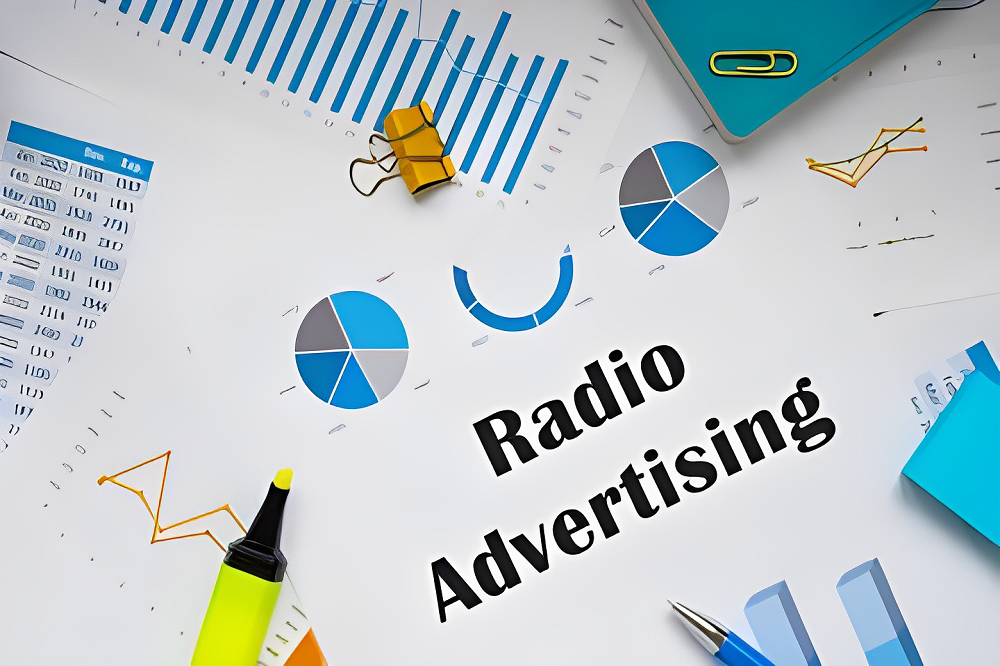Radio advertising has been around for nearly a century. Many consider it “old school.” It remains one of the most powerful and cost-effective ways to reach consumers today.
In 2024, radio continues to have a strong reach, with 93% of adults listening to the radio each week. Furthermore, radio listeners are loyal, tuning in for over 2 hours per day on average.
Radio advertising is an efficient way for businesses to expose their brand and message to local audiences. Studies show radio ads generate twice the brand awareness of TV ads. ROI is consistently higher as well.
In this article, we’ll explore radio advertising best practices, including how to:
- Choose the right radio stations and shows for your target audience
- Craft effective radio ad copy and calls to action
- Incorporate radio into an omnichannel marketing strategy
- Measure the impact through direct response techniques
Follow these tips to make the most of radio advertising in 2024.
Choosing the Right Radio Placements
To run a successful radio advertising, put your message in front of your target audience. Take time to research stations. Look for programs whose format and listener demographics align with your goals.
Consider factors like:
- Format: Music, talk, sports, etc. What content does your audience engage with?
- Demographics: Age, gender, income, etc. Look for shows matching your customer base.
- Geography: Consider coverage areas and drive times.
- Context: Does the programming content synergize with your brand?
Look for sustained listening patterns that allow you to repeatedly reach listeners. Morning commutes and at-work listening represent the radio’s strong points.
You can request ratings data from stations to compare audience sizes. Online radio ad-buying platforms also provide audience details as you select packages.
In addition to spot advertising during programs, check if any stations offer sponsorship opportunities. For example, you could exclusively brand a segment like traffic, weather, or contests. This can enhance exposure.
Crafting Effective Radio Ad Copy
Your radio ad copy should quickly capture attention. It should identify your brand, convey key messages, and provide a clear call to action.
Keep these radio ad writing tips in mind:
- Hook early. Lead with an attention-grabbing offer, question, or stat.
- Brand. Mention your company name early and repeat it later.
- Speak conversationally. Use conversational language vs. overly salty tones.
- Highlight benefits. Focus on emotional, social, and functional benefits.
- Use voices purposefully. Multiple voices and sound effects can enhance engagement. Consider using a narrator, a character, and even sound effects or music to bring the ad to life.
- Direct to action. Tell listeners specifically what to do – visit, call, use promo code, etc. Give them a simple, clear direction.
- Repeat key details. Reinforce your brand, offer, and call to action multiple times. Don’t assume they heard it the first time.
- Close strongly. End by summarizing your value proposition and call to action. Repeat the call-to-action as the final impression.
It is important to remember that most advertisements are only 15 to 60 seconds in length. Since every word is critical, it is essential to make them memorable. Test a few versions to see what resonates most.
Integrating Radio into Your Marketing Mix
Radio advertising works best when integrated with your broader marketing strategy. Take advantage of radio’s unique benefits while coordinating with other channels.
Ways to connect radio with other marketing include:
- Promoting radio ads on social media and digital channels
- Driving listeners to landing pages with more info
- Using radio to reach customers near retail locations
- Having in-store signage promote what’s on air
- Developing online video content that expands on radio messages
- Timing TV spots to align with heavy radio flights
- Offering radio promo codes usable online or in-store
- Coordinating radio giveaways and contests with email or social promotions
- Capturing radio ad content as shareable social videos
- Repurposing popular radio segments into podcasts
Make ads consistent across channels while adapting messaging to each medium. Track sales and online activity by the market. See how radio drives results across channels.
Measuring Radio Ad Results
It’s important to quantify your radio advertising ROI. Work with stations to monitor response. Incorporate direct response techniques, such as unique promo codes and vanity URLs.
Ways to gauge radio effectiveness include:
- Direct response tracking – unique phone numbers, codes, URLs
- In-store traffic and sales data – staff can collect details
- Digital lift – compare web traffic and search volume
- CRM data – track radio source among new contacts
- Surveys – ask customers how they heard of you
- Brand studies – measure recall, awareness, favorability
- Geo-targeted digital ads – see radio impact on local ad response
- A/B test variables like ad copy, frequency, etc.
Set up A/B tests to see how response differs across stations, slots, and creative approaches. Use your findings to optimize future campaigns.
The Future of Radio Advertising
Radio programming continues on terrestrial and satellite radio. Streaming and podcasts offer new possibilities for audio advertising. You can now target podcast ads to specific listener segments. Smart speakers even recognize voices to deliver personalized ads.
Yet the emotional power of classic radio remains. In 2024, balanced radio advertising maximizes local personalities. It engages loyal listeners and integrates with broader efforts. This approach continues to deliver impressive results.
Conclusion
Radio is a unique advertising medium. It combines informative content, entertaining personalities, and geography-based targeting. It also provides frequent exposure, trustworthy hosts, and captive audiences.
Identify core listeners, refine your creative, and integrate across channels. This will help radio ads build brand awareness, prompt action, and increase sales for your business in 2024. Monitor response to make sure it’s working.
Radio’s ability to tell stories, connect locally, and reach listeners routinely makes it a powerful tool. Radio advertising, when used with other marketing channels, is still a cost-effective way to achieve marketing success.

